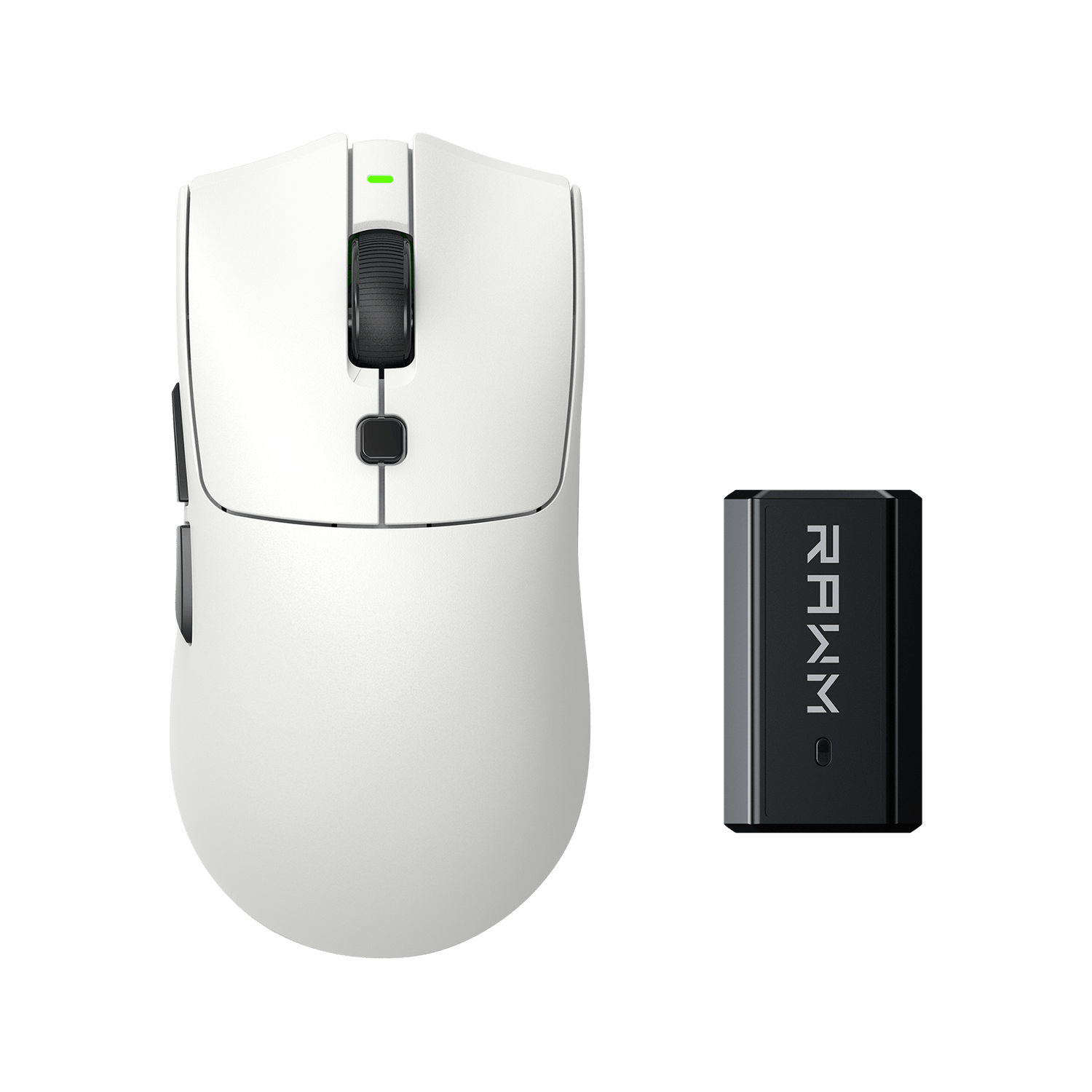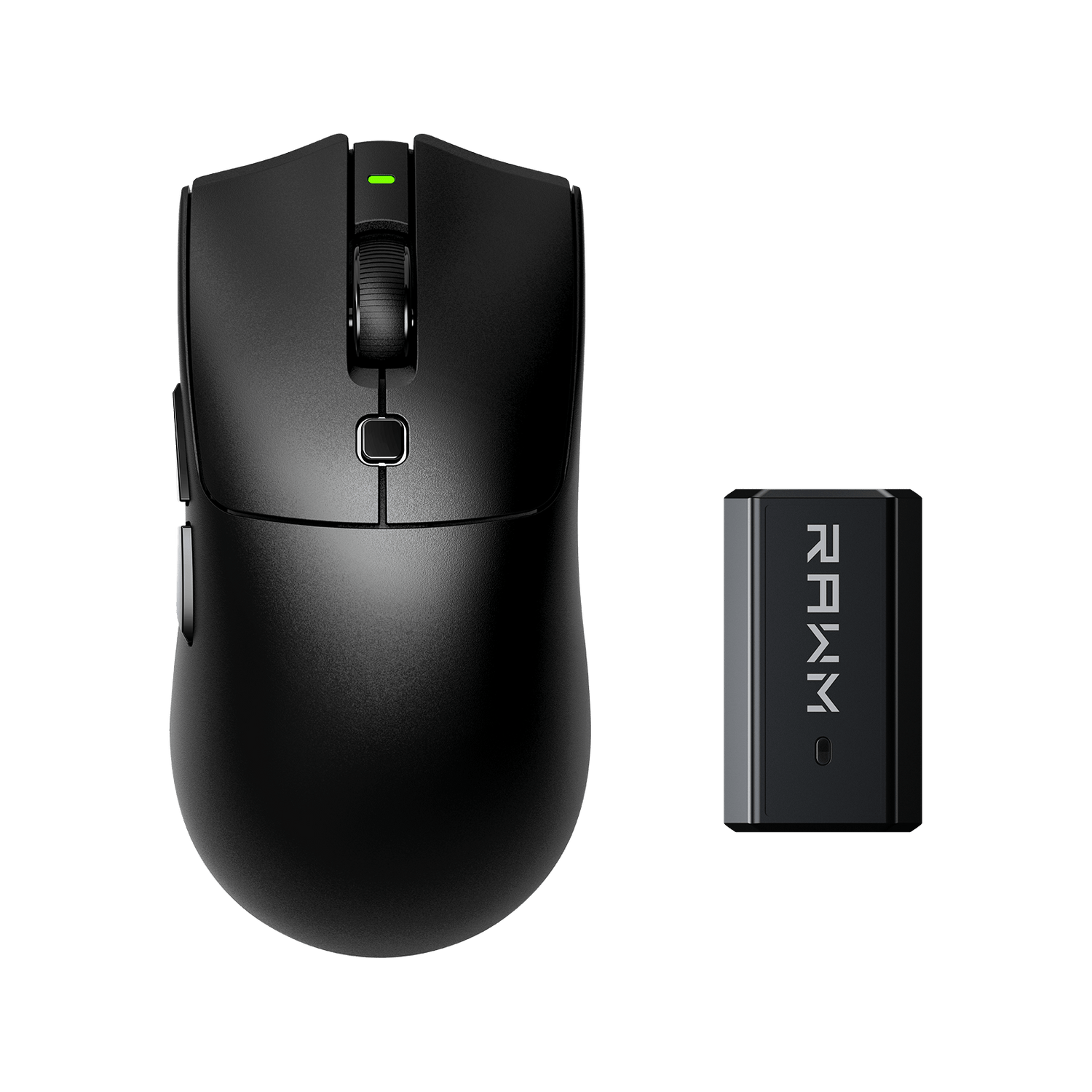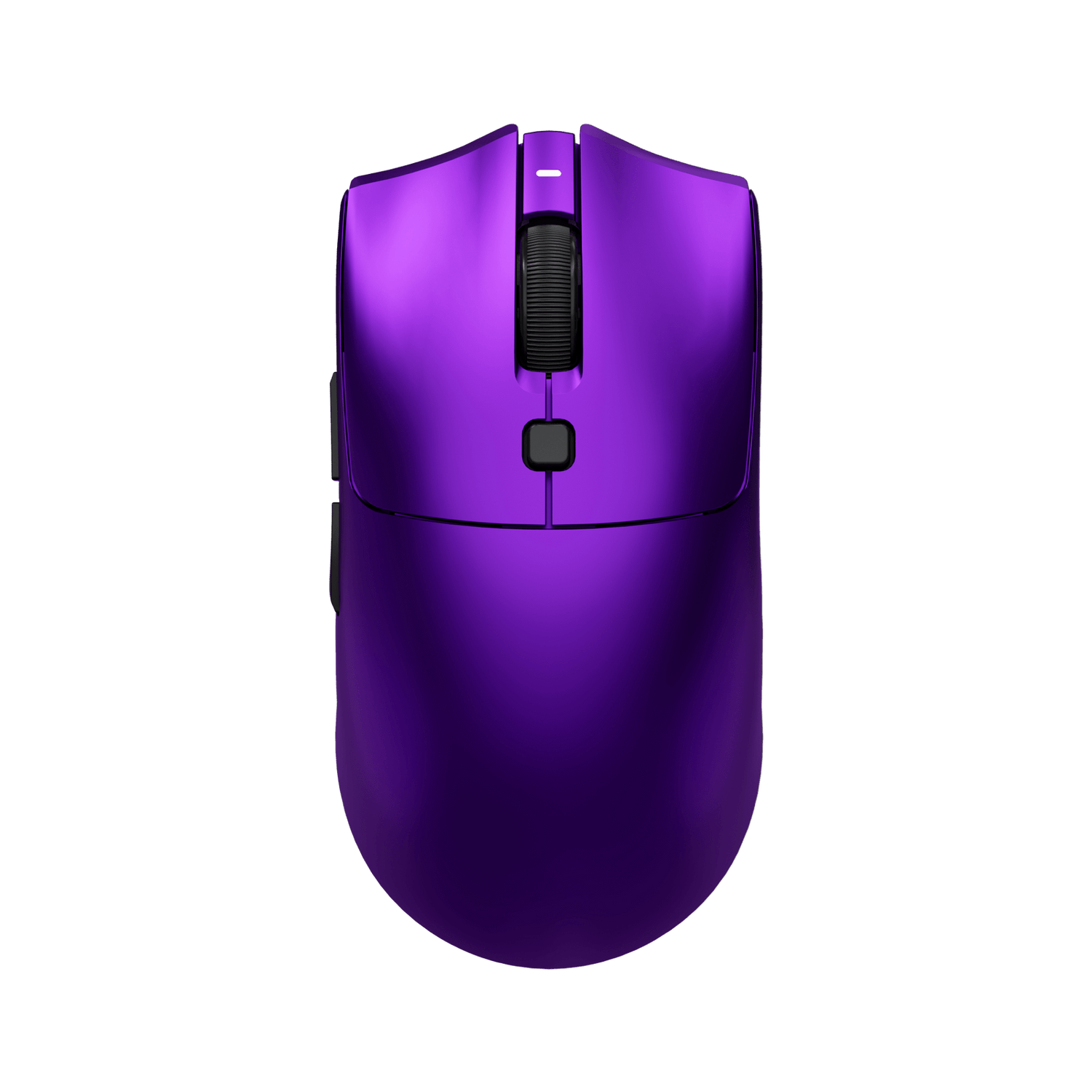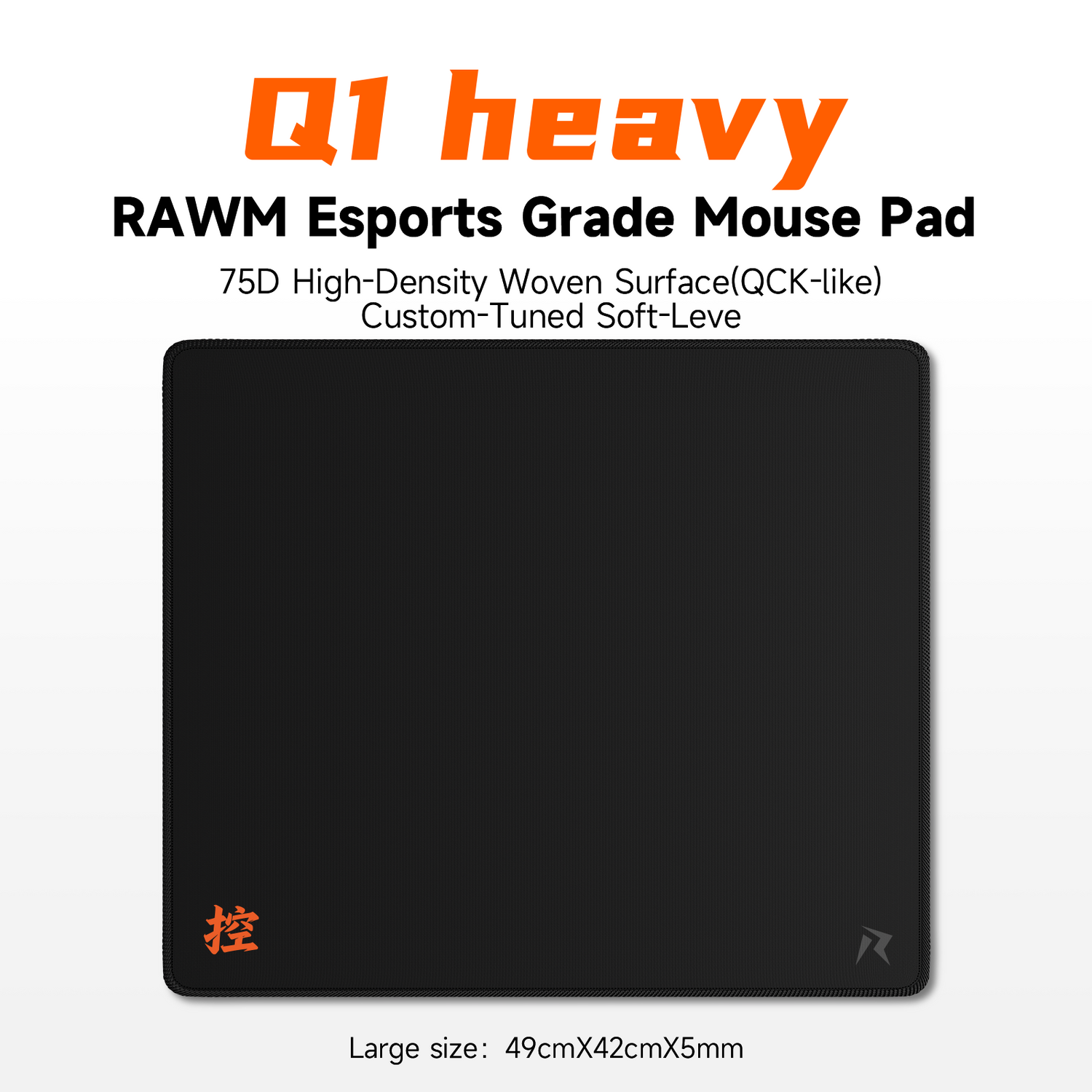
Comment calibrer une souris pour différentes surfaces ?
1. Qu'est-ce que le calibrage de la surface d'une souris de jeu et pourquoi est-ce important ?
2. Comment effectuer l'étalonnage de la surface de la souris de jeu étape par étape
3. Comprendre la science derrière l'étalonnage de la surface des souris de jeu
4. Quand faut-il recalibrer la surface de votre souris de jeu ?
5. Comment le calibrage de la surface de la souris de jeu affecte la distance de décollement et le DPI
6. Erreurs courantes à éviter lors du calibrage de la surface de la souris de jeu
Si vous avez déjà constaté une perte de précision de votre souris en passant d'un tapis de souris en tissu à une surface rigide en plastique ou en verre, vous ne rêvez pas. La surface sur laquelle repose votre souris influence grandement la précision du suivi des mouvements par son capteur. C'est là qu'intervient le calibrage de la surface des souris gaming .
Le calibrage de la surface de la souris gaming consiste à optimiser le capteur pour qu'il reconnaisse la texture et la réflectivité uniques de la surface sur laquelle il est utilisé. Que vous soyez un joueur compétitif ou un professionnel de la création, un suivi correctement calibré garantit des mouvements de curseur plus fluides, une réduction des saccades et une meilleure précision, sans avoir à augmenter inutilement la résolution (DPI).
1. Qu'est-ce que le calibrage de la surface d'une souris de jeu et pourquoi est-ce important ?
Avant d'apprendre à calibrer, il est essentiel de comprendre pourquoi le calibrage de la surface des souris de jeu existe.
Les souris de jeu modernes utilisent des capteurs optiques ou laser pour détecter les mouvements en capturant rapidement des images de la surface sous-jacente. Cependant, les surfaces varient : un tissu doux absorbe la lumière, tandis qu’une surface brillante la réfléchit de manière irrégulière. Ces irrégularités entraînent des erreurs de suivi, des problèmes d’accélération ou des sauts de curseur.
Principaux avantages du calibrage de la surface de la souris de jeu :
| Avantage | Résultat |
|---|---|
| Précision des capteurs améliorée | Suivi constant même à basse altitude de décollage |
| Dérive du curseur réduite | Aucun à-coup ni tremblement aléatoire lors de petits mouvements |
| Performances DPI optimisées | Suivi précis 1:1 pour votre réglage DPI préféré |
| Meilleure maîtrise du jeu | Visée plus stable lors des mouvements rapides |
| Compatibilité étendue avec les tapis de souris | Fonctionne parfaitement sur tapis de sol en tissu, hybrides ou rigides. |
Lorsque vous effectuez un étalonnage de la surface de votre souris de jeu , le capteur apprend le modèle de réflexion de la surface et le compense automatiquement, garantissant ainsi une expérience de jeu plus fluide et une précision de travail accrue dans tous les environnements.
2. Comment effectuer l'étalonnage de la surface de la souris de jeu étape par étape
Maintenant que vous savez pourquoi c'est important, voyons comment calibrer efficacement la surface d'une souris de jeu .
La plupart des souris gaming haut de gamme (comme les modèles Logitech, Razer ou RAWM) intègrent des outils de calibration dans leur logiciel de configuration. La procédure est généralement la suivante :
Guide étape par étape :
-
Ouvrez votre logiciel de souris
Lancez l'application du fabricant, par exemple RAWM Hub pour les souris RAWM. -
Accédez à la section d'étalonnage de surface
Recherchez une option intitulée Réglage de la surface ou Calibrer la surface de la souris . -
Nettoyez le tapis de souris
La poussière, les huiles ou les fibres peuvent perturber le suivi. Utilisez un chiffon en microfibre pour nettoyer la surface. -
Démarrer le processus d'étalonnage
Suivez les instructions à l'écran et déplacez la souris en formant des cercles ou des huit pendant 10 à 20 secondes. -
Enregistrer le profil d'étalonnage
La plupart des logiciels permettent d'enregistrer plusieurs profils pour différentes surfaces (tapis en tissu, bureau, verre, etc.). -
Suivi des tests
Déplacez votre souris lentement, puis rapidement. Le curseur doit se déplacer de manière fluide, sans saccades ni décalage.
Exemple:
Si vous utilisez un RAWM Leviathan V4 , ouvrez RAWM Hub, sélectionnez « Étalonnage de surface », choisissez votre type de tapis (tissu ou dur), puis faites glisser doucement la souris dessus pendant l'étalonnage.
Grâce à son capteur PixArt 3950 et à sa puce sans fil Nordic 54L15 , il ajuste automatiquement la distance de décollage et le traitement du signal du capteur pour une précision de suivi idéale.
3. Comprendre la science derrière l'étalonnage de la surface des souris de jeu
Le principe de base du calibrage de la surface d'une souris de jeu repose sur la création d'une carte de réflexion — un modèle numérique de la façon dont votre capteur « voit » votre bureau ou votre tapis de souris.
Chaque surface possède un profil de réflexion diffuse différent, c'est-à-dire une façon différente de diffuser ou d'absorber la lumière infrarouge provenant du capteur de votre souris.
| Type de surface | Type de réflexion | Difficulté d'étalonnage | Résultats du suivi |
|---|---|---|---|
| Tissu (doux) | Diffuser | Facile | Stable, légèrement plus lent |
| plastique dur | Semi-réfléchissant | Modéré | Suivi plus rapide et plus précis |
| Aluminium | Hautement réfléchissant | Difficile | Peut provoquer des dérapages |
| Verre | Transparent | Très difficile | Nécessite des capteurs spéciaux |
| Coussin hybride | Mixte | Moyen | Performance équilibrée |
Un bon étalonnage garantit que le processeur de signal numérique (DSP) de votre capteur compense ces variations de réflexion.
Par exemple, une souris peut ajuster dynamiquement la vitesse d'obturation, l'intensité de la LED ou la vitesse de traitement d'image après étalonnage.
4. Quand faut-il recalibrer la surface de votre souris de jeu ?
Le calibrage de la surface d'une souris de jeu n'est pas une opération ponctuelle. Plusieurs facteurs peuvent dégrader la précision du capteur au fil du temps :
-
Changement de tapis de souris : le changement de matériau modifie la réflexion.
-
Facteurs environnementaux : l’humidité, la poussière et l’usure affectent l’homogénéité de la surface.
-
Mises à jour du micrologiciel : les optimisations des capteurs peuvent réinitialiser les étalonnages précédents.
-
Déplacements ou bureaux différents : la texture et la réflectivité des surfaces varient selon les configurations.
En règle générale, il est conseillé de recalibrer toutes les 2 à 4 semaines ou à chaque modification de votre configuration. Les joueurs utilisant des configurations portables comme le RAWM Leviathan V4 bénéficient grandement de l'enregistrement de plusieurs profils de surface, qui s'adaptent automatiquement lorsqu'ils sont connectés à différents systèmes.
5. Comment le calibrage de la surface de la souris de jeu affecte la distance de décollement et le DPI
Il existe une relation moins évidente mais essentielle entre l'étalonnage de la surface de la souris de jeu , la sensibilité DPI et la distance de décollement (LOD).
La distance de détection détermine la hauteur maximale à laquelle vous pouvez lever votre souris avant que le capteur ne cesse de suivre. Un mauvais étalonnage peut entraîner une distance de détection incohérente ; par exemple, votre curseur peut dériver lors de vos déplacements pendant une partie de FPS.
Un étalonnage correct de la surface de votre souris de jeu permet à votre souris :
-
Maintenir un niveau de détail constant sur les coussinets durs et mous.
-
Offre des performances haute résolution précises sans saccades.
-
Empêcher le curseur de dériver lorsque vous soulevez ou inclinez légèrement l'appareil.
Le capteur PixArt 3950 du Leviathan V4 mesure automatiquement les données de réflexion de surface lors de l'étalonnage, optimisant à la fois la mise à l'échelle DPI et la LOD au niveau matériel, ce qui signifie que vous pouvez viser plus rapidement et avec plus de précision, sans dépasser la cible en raison d'une erreur de décollage.
6. Erreurs courantes à éviter lors du calibrage de la surface de la souris de jeu
Même avec le meilleur matériel, le calibrage de la surface de la souris gaming peut échouer s'il est mal effectué. Évitez ces erreurs courantes :
-
❌ Calibrage sur une surface sale – Les huiles ou les débris faussent les lectures du capteur.
-
❌ Déplacement trop rapide pendant l'étalonnage – Maintenez un mouvement lent et régulier pour capturer des données précises.
-
❌ Calibrage sous un éclairage irrégulier – La lumière intense du soleil ou les surfaces RVB colorées peuvent interférer.
-
❌ Ignorer les préréglages par défaut – Certaines marques proposent des profils optimisés pour les tapis de souris populaires (utilisez-les !).
-
❌ Utiliser des bureaux réfléchissants sans sous-main – Les surfaces instables produisent un suivi imprévisible.
Si vous suivez les meilleures pratiques et utilisez un capteur conçu pour une haute précision — comme le PixArt 3950 du Leviathan V4, conçu pour un étalonnage adaptatif —, vous bénéficierez d'un contrôle plus fluide et plus naturel, quel que soit le type de surface.
Maîtriser le calibrage de la surface de la souris de jeu pour une précision optimale
Comment calibrer sa souris pour différentes surfaces ? La réponse réside dans un étalonnage précis de la surface : il est essentiel de bien comprendre son matériel, la surface de travail et l’environnement.
En quelques minutes de configuration, vous pouvez éliminer les saccades, réduire le délai d'entrée et obtenir une visée constante quelle que soit votre configuration. Que vous jouiez sur un tapis de souris en tissu, un tapis de souris rigide ou même une surface hybride, le calibrage garantit que le capteur de votre souris capte avec précision chaque micromouvement.
Si vous recherchez un appareil qui simplifie l'étalonnage, le RAWM Leviathan V4 est un excellent exemple. Grâce à son capteur PixArt 3950 , son chipset Nordic 54L15 et son algorithme intégré d'optimisation de surface, il s'étalonne automatiquement pour garantir un suivi optimal où que vous soyez.
En maîtrisant le calibrage de la surface de votre souris de jeu , vous bénéficierez d'une visée plus fluide, d'une réaction plus rapide et, au final, de plus de victoires.
Avez-vous déjà essayé de calibrer la surface de votre souris gaming ? Cela a-t-il amélioré la précision du suivi ? Partagez votre expérience ci-dessous : vos conseils pourraient aider d’autres joueurs à optimiser leurs réglages !
>>Voir aussi Puis-je enregistrer des profils directement sur ma souris de jeu ? > >>>>








